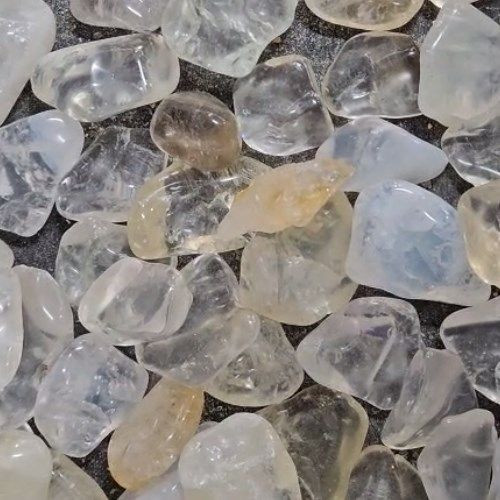Product Description
Opal Pink Tumbled Stone 1"-1.25"
Mineral Information:
Pink opal is a variety of opal that is characterized by its predominant pink color. It is known for its soft and delicate hues of pink, ranging from pale pink to deeper rose tones. Pink opal is valued for its soothing and gentle energy, as well as its unique beauty.
Pink opal is composed of hydrated silica, similar to other opals, but it lacks the play of color that is characteristic of precious opals. Instead, pink opal exhibits a consistent and opaque pink or rosy appearance. It often has a waxy or vitreous luster and can be translucent to opaque.
Pink opal is found in various locations around the world, including Peru, Mexico, Australia, and the United States. In recent years, pink opal from Peru, specifically from the Andean region, has gained popularity and is sometimes referred to as "Andean Pink Opal."
Metaphysical Meaning:
Pink opal is associated with emotional healing, love, and tranquility. It is believed to have a calming and nurturing energy that can help soothe emotional distress, alleviate anxiety, and promote feelings of love, compassion, and inner peace. Pink opal is also said to be connected to the heart chakra, supporting emotional balance, self-love, and harmonious relationships.
Mineral Care:
Pink opal, like other opals, is generally considered a relatively fragile gemstone compared to many other minerals. Its fragility can be attributed to its internal structure and physical properties.
Opals, including pink opal, have a unique internal structure composed of hydrated silica spheres arranged in a three-dimensional lattice. This structure creates air pockets and voids within the stone, making opals more susceptible to damage. The voids can weaken the overall structure, making pink opal prone to cracking, chipping, and impact damage.
Furthermore, pink opal has a hardness of about 5.5 to 6.5 on the Mohs scale, which indicates its resistance to scratching. While this hardness is moderate, it is lower compared to harder gemstones such as sapphires or diamonds. As a result, pink opal can be more easily scratched or abraded by materials with higher hardness.
In addition to its internal structure and hardness, pink opal is sensitive to changes in temperature and humidity. Rapid fluctuations in temperature or exposure to extreme heat can cause opal to expand and contract unevenly, potentially leading to internal stress and the development of cracks. Extended exposure to high humidity or direct water contact can result in the absorption of moisture by the opal, which may lead to color fading, loss of luster, or even cracking.
To protect pink opal and minimize the risk of damage, it is important to handle it with care. Avoid subjecting it to rough treatment, impact, or pressure. Store pink opal jewelry separately from other harder gemstones to prevent scratching. It is also advisable to avoid exposing pink opal to extreme temperature changes and to remove it before engaging in activities that may pose a higher risk of damage.
Proper cleaning and maintenance are crucial to preserve the beauty and durability of pink opal. Clean it gently using mild soap and warm water, and avoid using harsh chemicals or ultrasonic cleaners that could potentially damage or degrade the stone. When not in use, store pink opal in a cool, dry place to minimize exposure to humidity.
Disclaimer:
No information here is intended to diagnose, treat or cure ailments or afflictions of any kind. One should always consult a medical professional if a serious issue presents itself.










